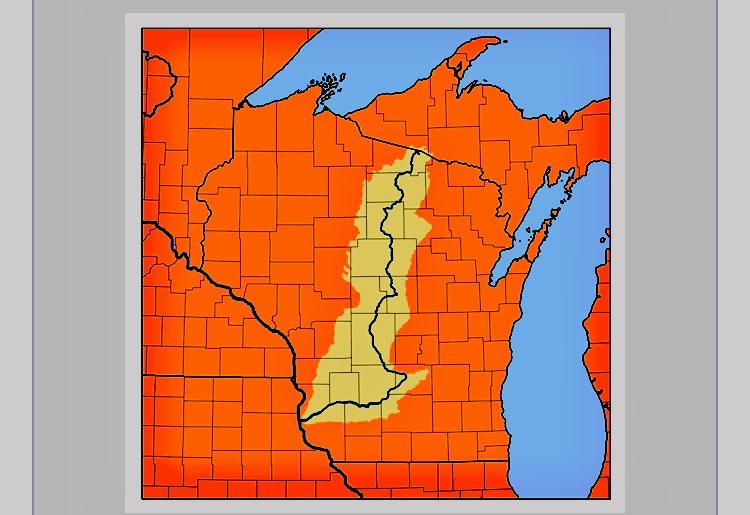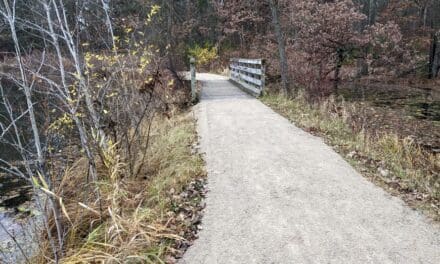The majestic Wisconsin River winds through the heart of Wisconsin, carrying with it a network of 26 remarkable dams. These structures stand as testaments to human ingenuity, environmental stewardship, and the symbiotic relationship between communities and nature. Embark on a captivating journey as we explore each dam along the length of the Wisconsin River, unveiling their unique contributions and the stories they tell.
- Buckhorn Dam:
Situated near Necedah, the Buckhorn Dam harnesses the river’s power for flood control and recreational purposes. Its picturesque reservoir, Buckhorn State Park, offers visitors opportunities for camping, fishing, and wildlife observation. - Castle Rock Dam:
The Castle Rock Dam, near Mauston, not only generates clean energy but also provides a serene oasis for recreational activities. Castle Rock Lake, its accompanying reservoir, stretches over 16,600 acres, offering ample space for fishing, boating, and relaxation. - Petenwell Dam:
Downstream from Castle Rock Dam, we encounter the grand Petenwell Dam. Boasting the 4th largest reservoir capacity in the United States, Petenwell Lake spans over 23,000 acres, inviting visitors to indulge in fishing, boating, and camping amidst breathtaking surroundings. - Wisconsin River Power Company Dam:
Located in Wisconsin Dells, the Wisconsin River Power Company Dam showcases the harmonious coexistence of nature and industry. Serving as a vantage point for exploring the awe-inspiring Dells, it provides captivating panoramic views of the river while accommodating thrilling boat tours. - Prairie du Sac Dam:
As we continue downstream, the Prairie du Sac Dam takes center stage as a crucial component of the Wisconsin River’s power generation system. Providing flood control measures and breathtaking views of the river, this dam also allows access to recreational adventures on Lake Wisconsin. - Merrimac Dam:
The Merrimac Dam, near the village of Merrimac, is a historical landmark that has been instrumental in creating Lake Wisconsin. Besides offering opportunities for fishing and boating, it serves as a bridge connecting the communities on either side of the river. - Portage Dam:
A further journey downstream brings us to the Portage Dam, serving the community of Portage. This versatile dam fosters both hydroelectric power generation and flood control, contributing to the resilience of the region. - Wisconsin Dells Dam:
In the heart of the iconic Wisconsin Dells, we find the Wisconsin Dells Dam. Embracing the river’s power, it serves as an essential source of hydroelectric energy, facilitating the vibrant tourism industry in the area. - Kilbourn Dam:
Named after the founder of Kilbourn City, now known as Wisconsin Dells, the Kilbourn Dam has historical significance and serves as a gateway to the scenic Kilbourn Flowage, allowing for marinas, fishing, and boating activities. - Rocky Run Dam:
Nestled near the village of Hancock, the Rocky Run Dam boasts a mesmerizing waterfall and a serene reservoir that beckons visitors with opportunities for fishing and boating. - Nekoosa Dam:
Downstream, we encounter the Nekoosa Dam, situated near the city of Nekoosa. It regulates the flow of the Wisconsin River, supporting power generation while ensuring water levels are optimal for recreational activities. - Wis Rapids Dam:
Near the vibrant city of Wisconsin Rapids stands the Wis Rapids Dam, which has served as both a source of power and a symbol of unity for the local community since its completion in 1909. It offers mesmerizing views and recreational opportunities along its beautiful flowage. - Paper Mill Dam:
Historically significant, the Paper Mill Dam in Biron once powered a paper mill. The dam now stands as a reminder of the region’s industrial heritage and contributes to the landscape’s allure. - Dexterville Dam:
Located just south of Wisconsin Rapids, the Dexterville Dam enhances water recreation opportunities, such as fishing, boating, and wildlife observation. - WH Robinson Dam:
Continuing further downstream, we reach the WH Robinson Dam, located near the village of Port Edwards. This dam supports flood control efforts and facilitates power generation, ensuring the region’s stability and sustainability. - Grand Rapids Dam:
Near the city of Grand Rapids, the eponymous Grand Rapids Dam not only provides hydroelectric power but also creates a picturesque flowage that invites visitors to relax and enjoy recreational activities. - Biron Dam:
Once instrumental in powering a thriving paper mill, the Biron Dam now contributes to flood control efforts and enhances the region’s natural beauty with its scenic flowage near the village of Biron. - Stevens Point Flowage Dam:
The Stevens Point Flowage Dam, situated near the city of Stevens Point, offers opportunities for fishing, boating, and birdwatching. Its tranquil atmosphere provides a perfect escape into nature. - Little Bull Falls Dam:
Downstream from Stevens Point, near Mosinee, the Little Bull Falls Dam captivates visitors with its striking waterfall and opportunities for fishing, picnicking, and exploring the surrounding nature. - Wisconsin River (Wisconsin Rapids) Dam:
Flowing through Wisconsin Rapids, this dam contributes to flood control, recreational water activities, and power generation. It stands as a testament to the region’s reliance on the river’s resources. - Wausau Dam:
Near the vibrant city of Wausau, the Wausau Dam plays a pivotal role in flood prevention and hydroelectric power generation. It symbolizes the area’s resilience in the face of natural challenges. - Brokaw Dam:
South of Wausau, the Brokaw Dam maintains water levels for recreational activities, such as fishing and boating, in the scenic area surrounding the village of Brokaw. - Rothschild Dam:
Located near the village of Rothschild, this dam ensures the stability of the river’s flow, benefitting both recreation and power generation in the region. - Mosinee Dam:
The Mosinee Dam offers opportunities for recreational activities, creating a calm flowage near the city of Mosinee where visitors can fish, boat, and enjoy peaceful moments in nature. - Necedah Dam:
The Necedah Dam, near the village of Necedah, holds back the river’s flow, allowing for the creation of an exceptional fishing and wildlife habitat in the surrounding area. - Prairie Island Dam:
Our final destination along the Wisconsin River brings us to the Prairie Island Dam near the village of Prairie du Sac. This crucial dam facilitates flood control and powers nearby communities while offering a picturesque backdrop for leisurely walks, picnics, and fishing.
Conclusion:
The Wisconsin River’s 26 dams stand as milestones along its journey, shaping the river’s course and influencing the lives of the communities that thrive alongside it. From the expansive reservoirs that provide recreational opportunities to the hydroelectric power they generate, these dams represent the harmonious coexistence of human progress and environmental conservation. As you explore the dams of the Wisconsin River, immerse yourself in the captivating stories they tell, and appreciate the remarkable beauty and functionality they bring to the communities that call the river’s banks home.
















